OVERVIEW
Microwave ovens are a traditional appliance found in a majority of households across the world. Consumers use the microwave oven to quickly and conveniently heat and prepare food and drink items. However, the design of microwave oven interfaces has scarcely changed since its invention. Present day microwave oven interfaces are still awkward to use due to lack of meaningful feedback about the state of the item being heated in the microwave, a lack of discoverability of frequently used functions due to a cluttered interface, and loud and obtrusive forms of feedback. For this project I analyzed and redesigned the interface of the Mainstays 700W Stainless Steel microwave oven.
Redesign elements were informed by user data collected through an online questionnaire (n = 257), as well as principles of engineering psychology. Data from the questionnaire was analyzed using word trees and an affinity diagrams. The redesign addressed the usability issues by incorporating temperature of item being heated as meaningful feedback, minimizing the number of buttons to increase discoverability of frequently used time-based buttons, and allowing users to mute loud and obtrusive audio feedback.
THE PROBLEM
Microwave oven interfaces haven't been updated since its invention. Present day microwave oven interfaces are still awkward to use due to,
-
Lack of meaningful feedback about the state of the item being heated in the microwave
-
Lack of discoverability of frequently used functions due to a cluttered interface
-
Loud and obtrusive forms of feedback
When breaking down the task of heating an item in the microwave, the main issue was surrounding the lack of meaningful feedback, and the user having to guess heating times based on their previous experience. If the heating time is too short, the user is stuck in an endless cycle of guesswork. If the heating time is too long the user may burn the item and have to discard it, or risk burning the roof of their mouth while consuming said item.

USER RESEARCH
To understand how users typically interact with a microwave, I created a survey through Google forms. The questionnaire included multiple-choice questions and open-ended text entry questions about the participants’ microwave usage habits. I was able to gather data from 257 respondents through the online questionnaire.
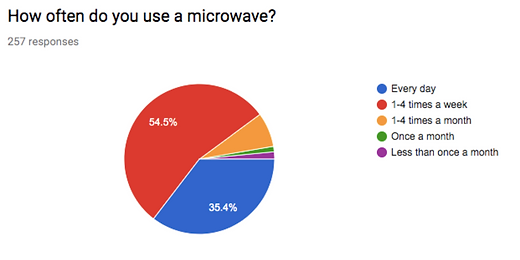

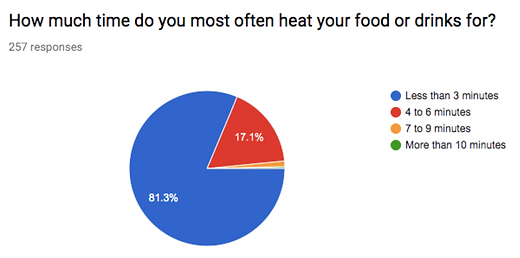

ANALYSIS
In order to analyze the rich qualitative insights provided in the open-ended questions of the online questionnaire, I used the text analysis software of NVivo to examine word frequencies through a word tree. Many participants stated that deciding the heating duration was based on previous experience, or a process of trial and error.


I then documented the most frequently mentioned concerns of the participants indicated in the open-ended text entry questions of the online questionnaire. Afterwards, I created an affinity diagram to group and examine the users’ concerns in terms of various aspects of the microwave. I grouped the responses in terms of the following categories,
-
Usability of the microwave
-
Feedback received from the microwave
-
Functions and performance
-
Cleaning issues
-
Physical features of the microwave
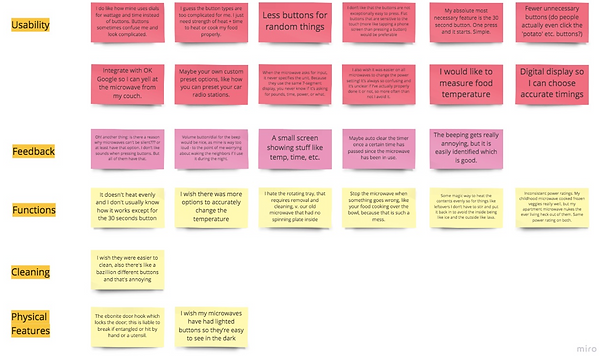
INSIGHTS
From the questionnaire responses I was able to capture the following insights,
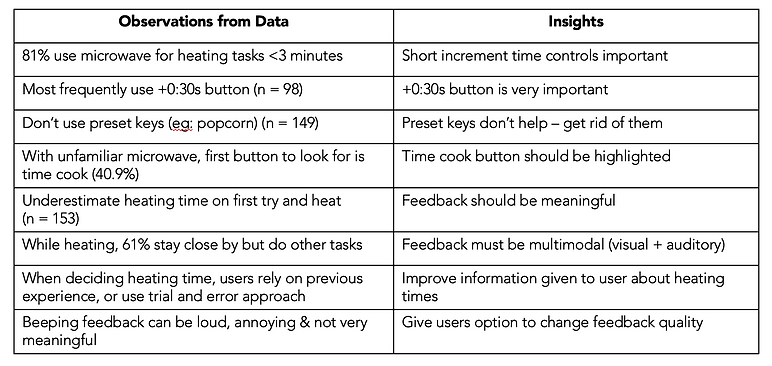
Based on the previous research and analysis of qualitative data, I was able to uncover the following redesign requirements,
-
Users tend to underestimate heating times
-
This can make process inconvenient and longer
-
Provide user with helpful information/guidelines for heating
-
-
Users most frequently use time-based buttons
-
Users don’t use preset buttons (e.g.: Frozen vegetables)
-
Highlight most frequently used buttons and minimize others
-
-
Feedback is annoying, loud, and not meaningful
-
Beeping noise is annoying and loud
-
Allow users to adjust form of feedback (mute sound)
-
Feedback should provide information about state of the item being heated
-
DESIGN PRINCIPLES
When tackling the redesign of the interface, I utilized the following design principles as a guide,
-
Levels of representation and mental models
-
Main function of microwave is to get item to desired temperature
-
Most users are familiar with temperature as a standard measure
-
Use temperature as representation of physical system and help users build mental model
-
-
Heuristics and Biases
-
Previous experiences influence user’s choices about heating times
-
May be incorrect as each microwave performance is different
-
-
Make feedback less ambiguous
THE SOLUTION
The solution includes an interface that,
-
Streamlines the Heating Process:
-
I incorporated information about the temperature of the item obtained from an infrared thermopile sensor into the display to eliminate the additional step of having to take the item out of the microwave to assess its temperature.
-
The display will provide temperature information while the item is being heated, thus allowing users to observe the current temperature and add heating time without stopping the current heating cycle.
-
Display will also have guidelines indicating the typical temperatures that are recommended for safely heating food by the USDA (2019). The guidelines are also color-coded to represent specific temperature information.
-
Progress circle serves as an emergent feature and matches color of temperature guidelines
-
-
Emphasizes Time-Based Buttons on the Interface:
-
Users rarely use the preset buttons that are specifically for certain types of foods such as popcorn.
-
I eliminated the preset buttons from the interface and emphasized the time-based buttons such as the time cook button, the quick time buttons of one, two, and three minutes, and the add 30 seconds button.
-
-
Can Change Auditory Feedback:
-
I added a mute button that gives users the option to turn off the auditory feedback when desired.
-
The integration of temperature into the display addressed the issue of providing meaningful feedback.
-
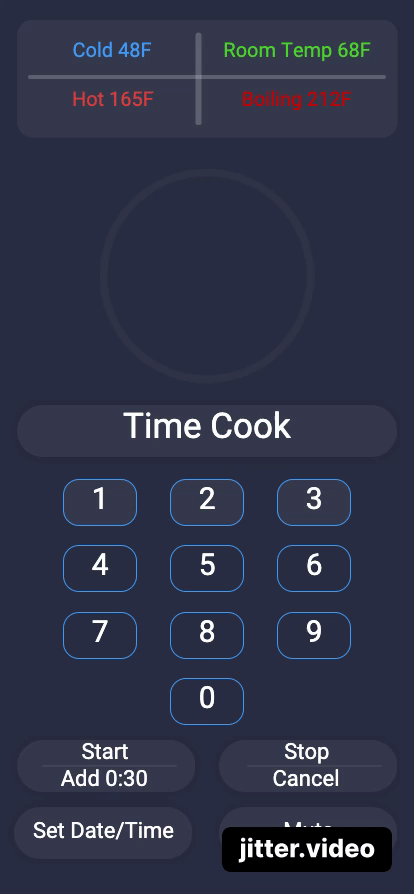

Home Screen with Time
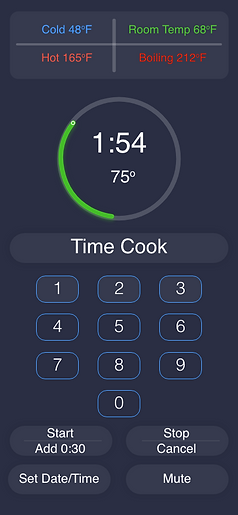
Room Temperature Indicated
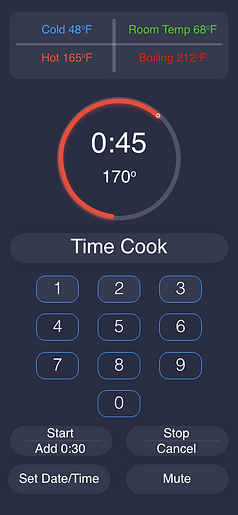
Hot Temperature Indicated

Cool Temperature Indicated
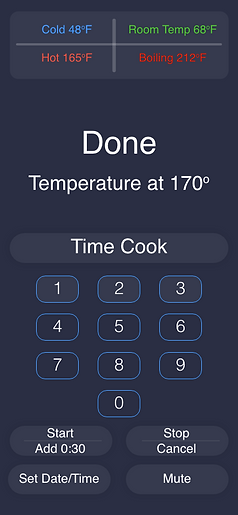
Done with Temperature Reading
